Alongside foxing and tears, acid-staining is another very common issue for works-on-paper. The problem stems from when acidic and inappropriate backing materials have been used by the artist or framer, and subsequently, pollutants have leached out into the artwork. Unsuitable materials will have been used for paintings of a certain age when the effects of acid damage were not common knowledge.
The acidic backing causes staining which is particularly noticeable in the vertical brown strips down the painting where the paper has been in long-term contact with the backing. The appearance of the artwork therefore can be greatly (and negatively) changed. As with any work-on-paper that has this problem, treatment provides full stability and using conservation-friendly materials ensures this problem never occurs again.
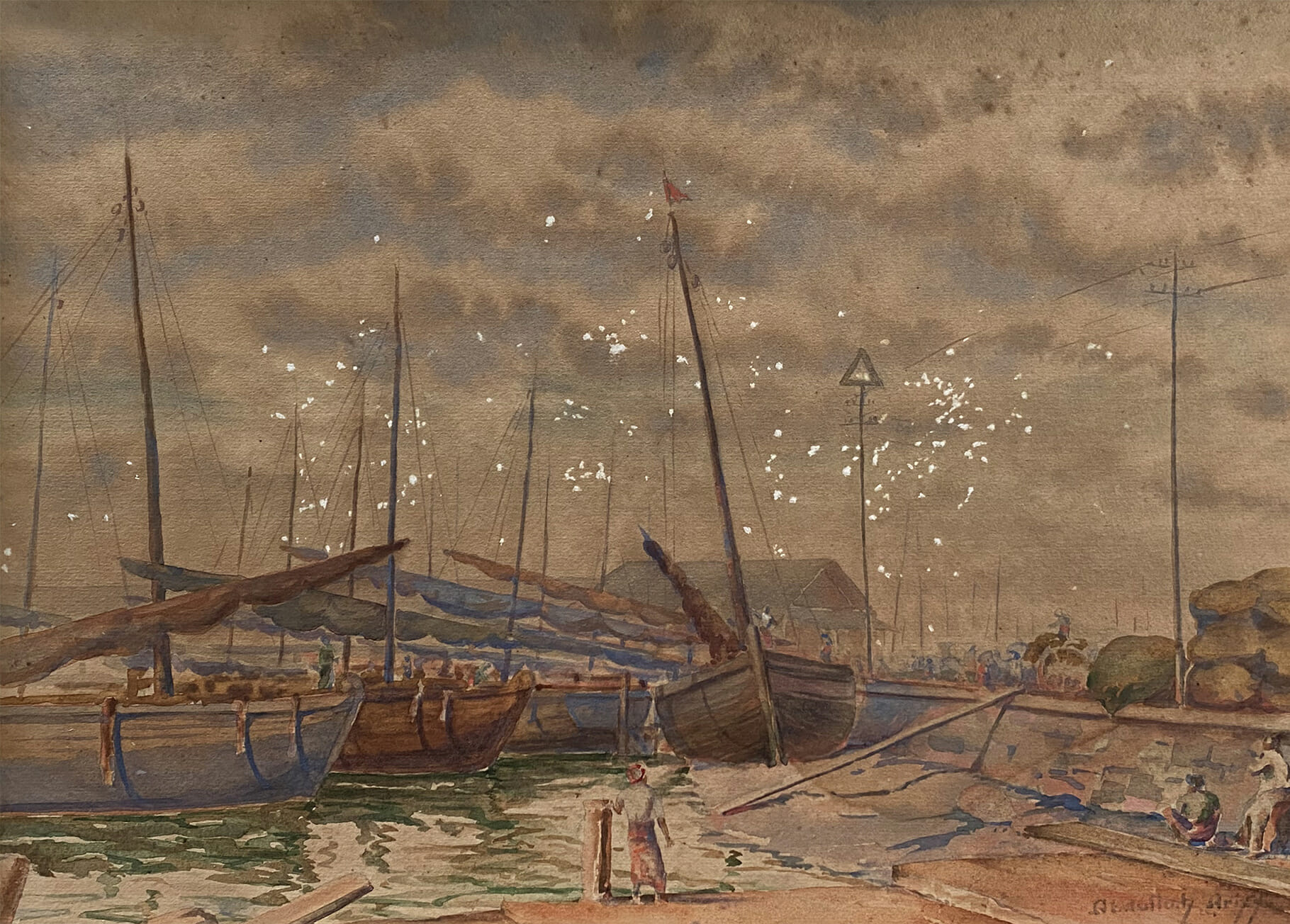
Take a look below at recent examples of acid staining and the treatment they needed. As with any restoration, sometimes our clients find it hard to perceive what an artwork could look like and what can be achieved – the results below speak for themselves…
What is the treatment for acid staining?
Our initial priority for acid stained artworks is to remove the inappropriate backing. Treatment begins with removing these materials, and once uncovered it’s possible to see the extent of the damage. After discarding the backing materials, we continue the treatment by gently washing the watercolour in our solution to address the staining. This process also lifts dirt and contaminants on the surface of the painting.
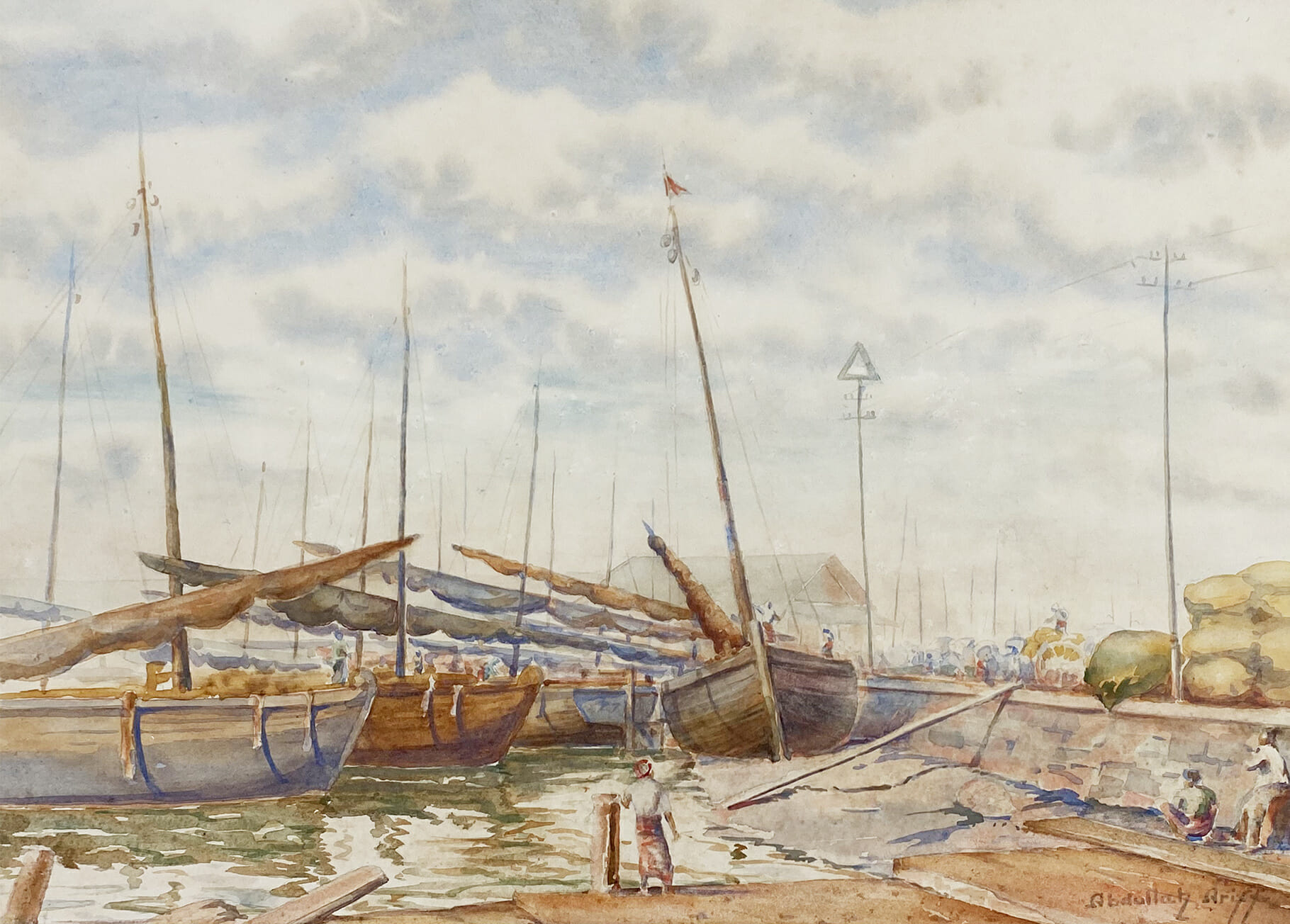
Understandably sometimes our clients can be concerned when a wet treatment is required on a watercolour. But in much the same way we solvent test before cleaning and varnish removal for an oil painting, we conduct similar tests to guarantee the stability of the pigments. Therefore, our clients can be assured that there will be no changes to the pigments – the colours will only brighten as the dirt is lifted.
Once the staining has been fully addressed and removed, we use conservation-friendly non-acidic materials to mount the artwork before reframing. Here are some recent examples of acid stained artworks…
Stained seascape
For this seascape painting, the acid-staining was particularly noticeable down the left-hand side of the painting, running down the sky and into the sea.

Our team removed the existing acid-contaminated backing and gently washed the watercolour to address the staining. This treatment also lifted the dirt and contaminants.
The difference after the restoration was fantastic and the painting was much improved. The staining was successfully treated and because the artwork was now secure with conservation-friendly backing materials, there would not be any further issues going forward.
You can read more about acid-staining and how it’s treated in our case study Treating Acid Damage in a Watercolour Painting.
Watercolour by E. McClelland
For this delicate watercolour by E. McClelland, the painting was suffering from acid staining leaching through from inappropriate backing materials, as well as foxing.
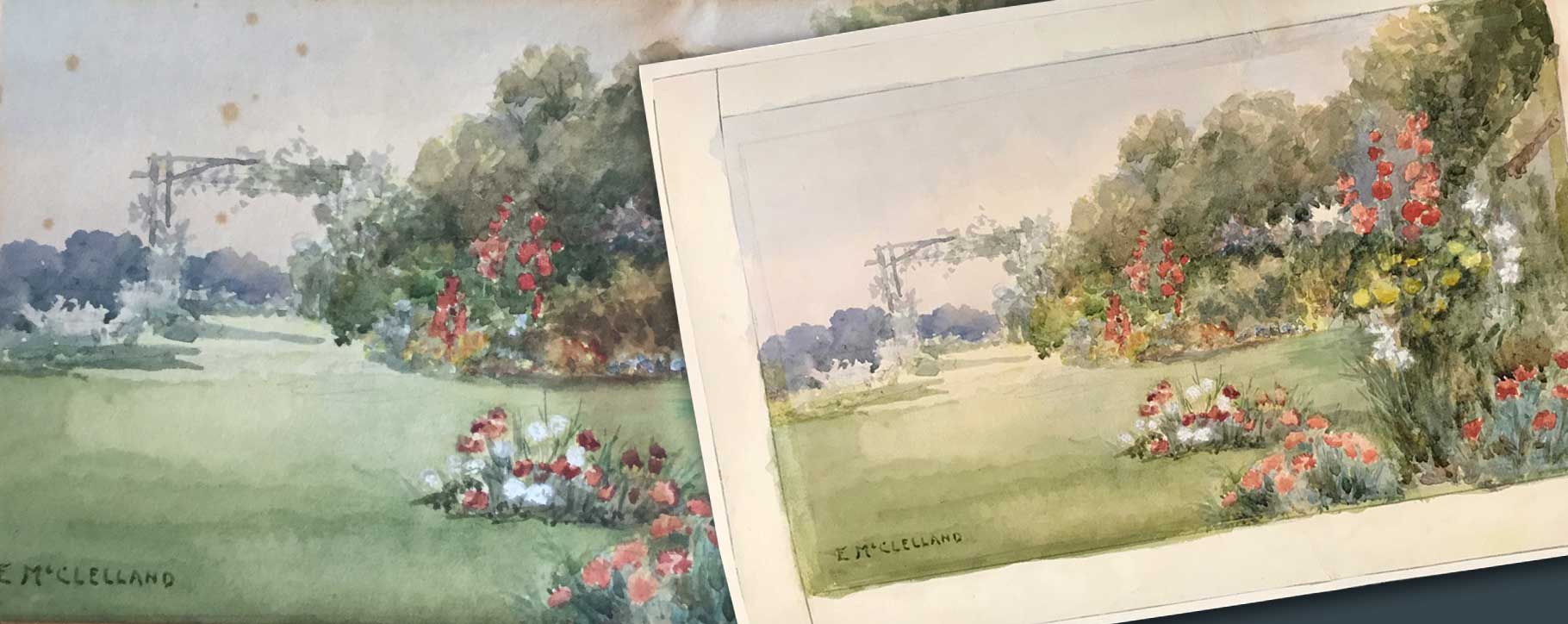
The foxing spots are deep reddish-brown, as is the staining. The painting is a very calm garden scene with blooming flowers, which was deeply at odds with the foxing flare-ups and heavy acid staining running vertically down the painting.
Our recommendations included gentle washing in our solution to address the foxing and staining, while also lifting dirt and contaminants. The backing materials were also removed and replaced to stop the painting from being further acid-damaged.
Our client was delighted with the results of the restoration, and how much brighter and stable the painting had become.
For more information, read our helpful article on Cleaning Watercolour Paintings.
Smooth sailing
This seascape is a wonderful example of what restoration can achieve. The acid staining for this painting was very severe and had contaminated the whole of the painting.
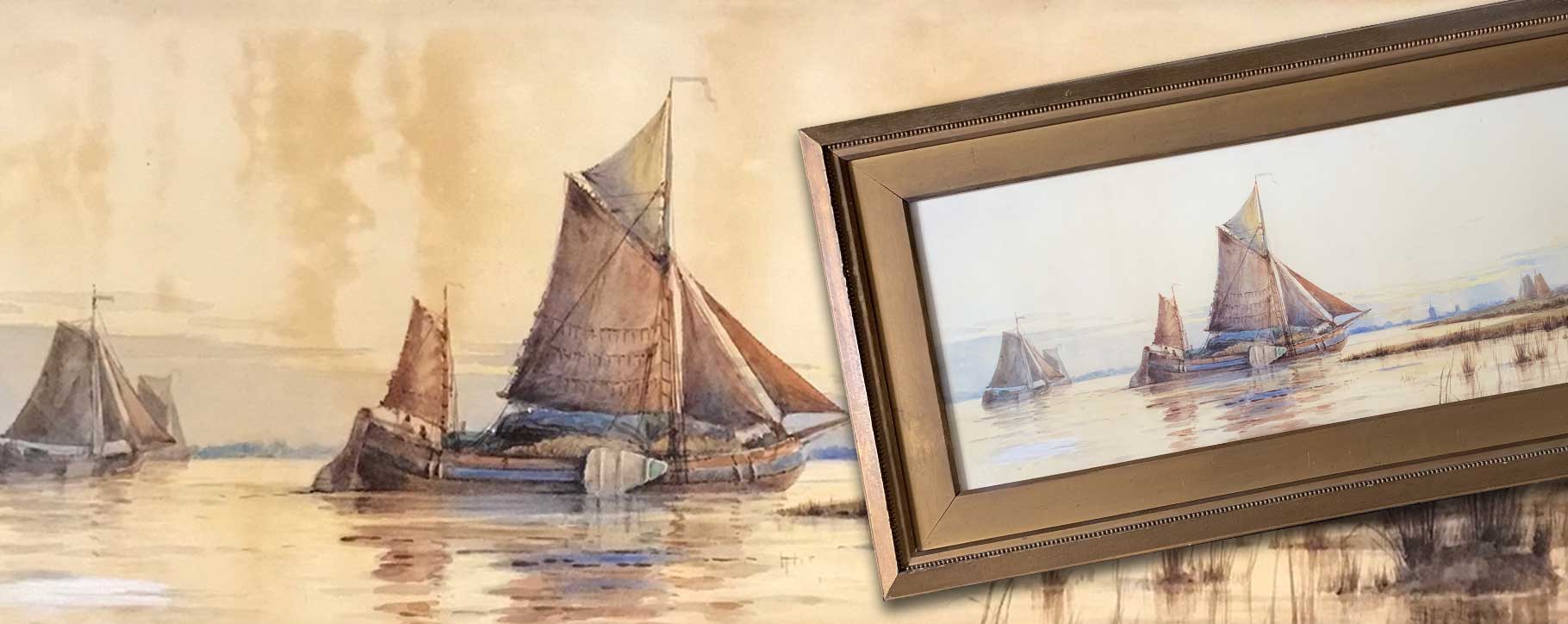
We first removed the inappropriate card backing which was heavily acid-contaminated, then gently washed the watercolour in our solution to address the staining. This process also lifted the dirt and contaminants. As with every watercolour, we also replaced the backing with a conservation standard museum backing and new frame backing board.
These measures are imperative to ensure that the painting is as well looked after as it can be and guarantee that no future acid staining will happen.
Our client was delighted with this result and was able to enjoy the previously distorted details of the painting.
Damaged lithograph
This torn lithograph would need the evident repairs as well as treatment for acid staining and foxing. We first cleaned the lithograph in our solution and addressed the foxing that was covering the piece, as well as the staining.
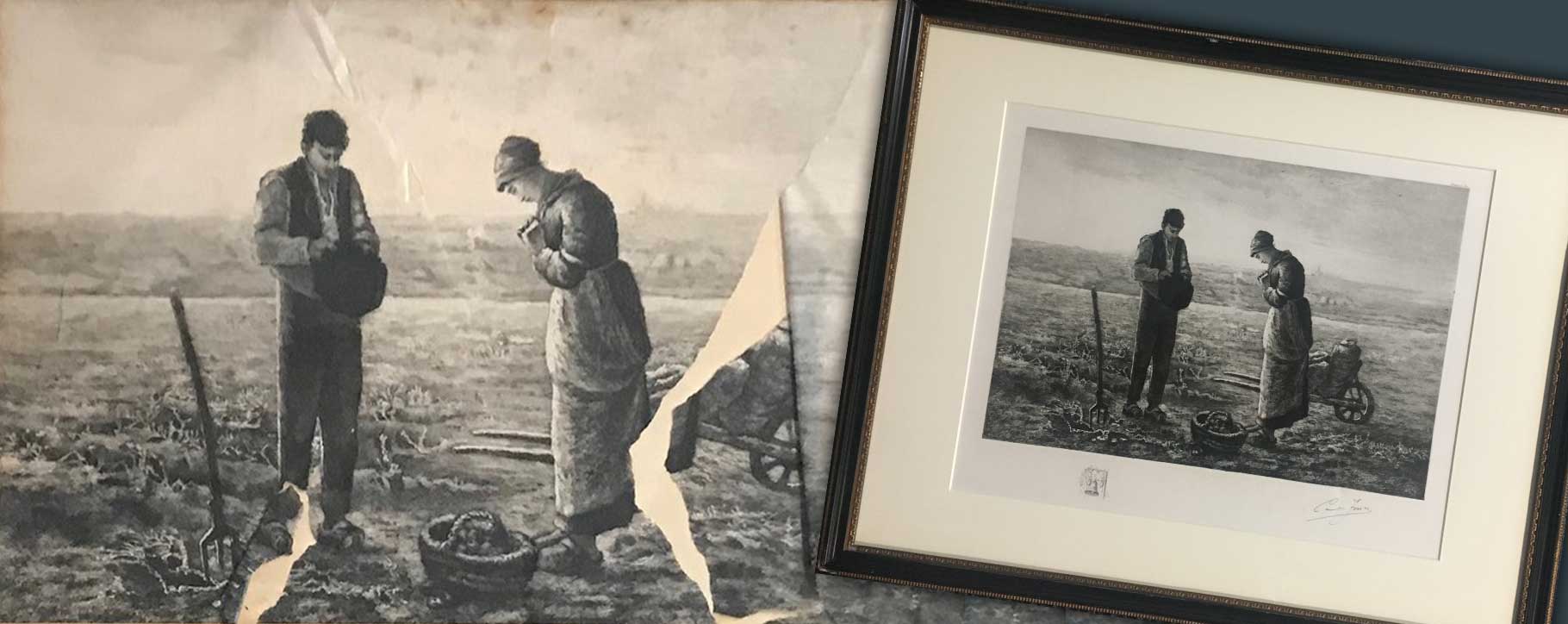
For works on paper with tears, missing areas, punctures or holes, the most common method for repairing is to fill the damaged areas with liquid paper pulp, and subsequently line with Japanese tissue for the most comprehensive structural stability. This treatment worked wonderfully for the lithograph.
Because the mount was so badly acid-stained and contaminated this was also replaced. Returning a newly restored painting to an acidic-mount will always require restoration again – the only solution with a mount that is so heavily damaged is to discard it. Once the lithograph was mounted again the artwork was reframed. It’s a fantastic result, and our client was delighted to receive it back.
Clear skies ahead
This delicate watercolour painting had huge sentimental value to our client and was an important part of their family history. The acidic discolouration was particularly evident in the light blue sky. Instead of fresh white clouds, they had instead turned a murky grey.

Restoration began with treating the acidic damage and reversing the widespread staining. Once treatment had been successful and the artwork was stabilised, we remounted the artwork using conservation standard materials and replaced the backing with an acid-free board.
The grey clouds have been dispelled and the result is a much fresher and healthier artwork.
For further insight into acid staining, you can read our advice on how it is treated in our helpful article.
If you think your watercolour may have acid staining or you would like further advice, contact us for our obligation-free help.






